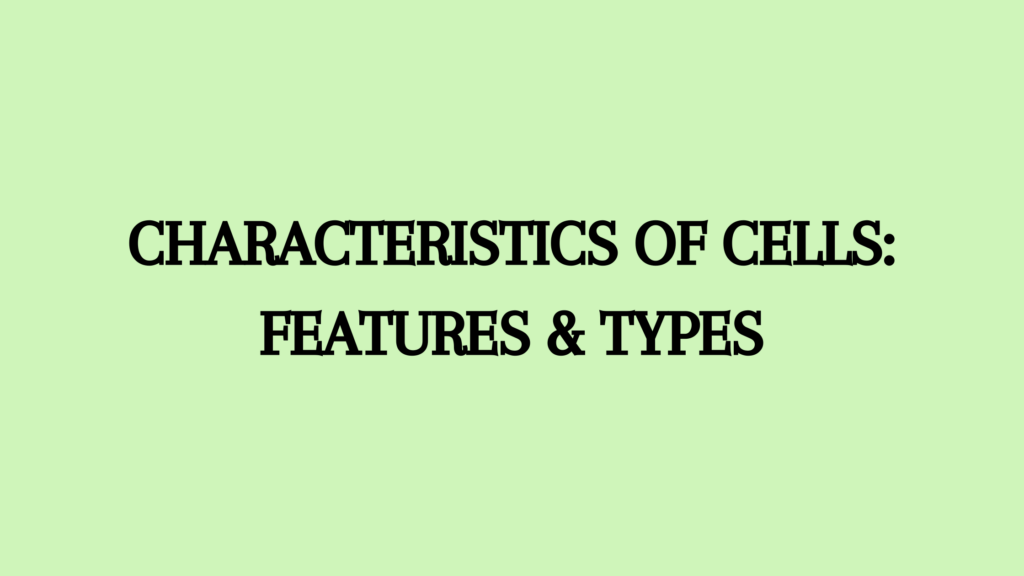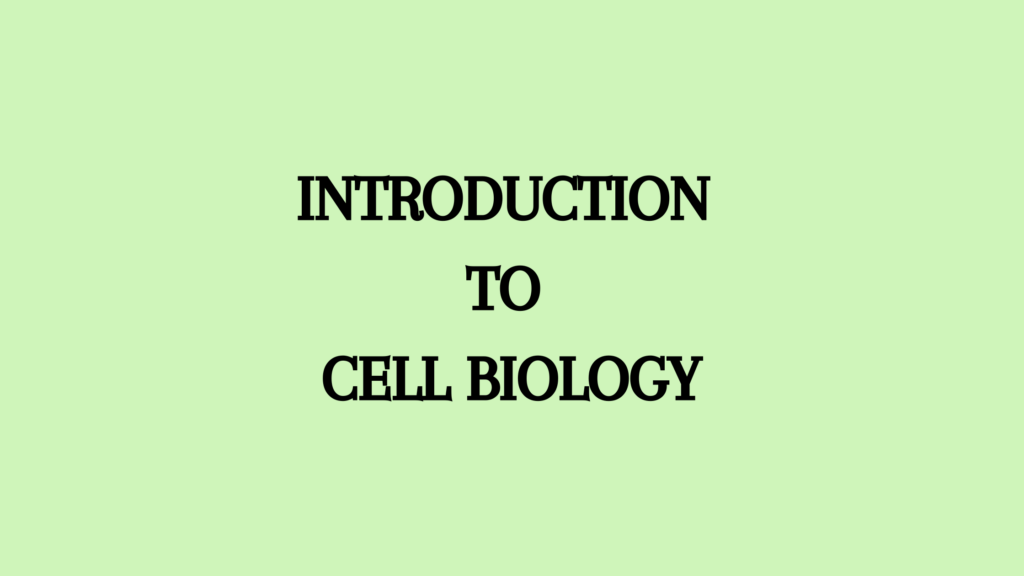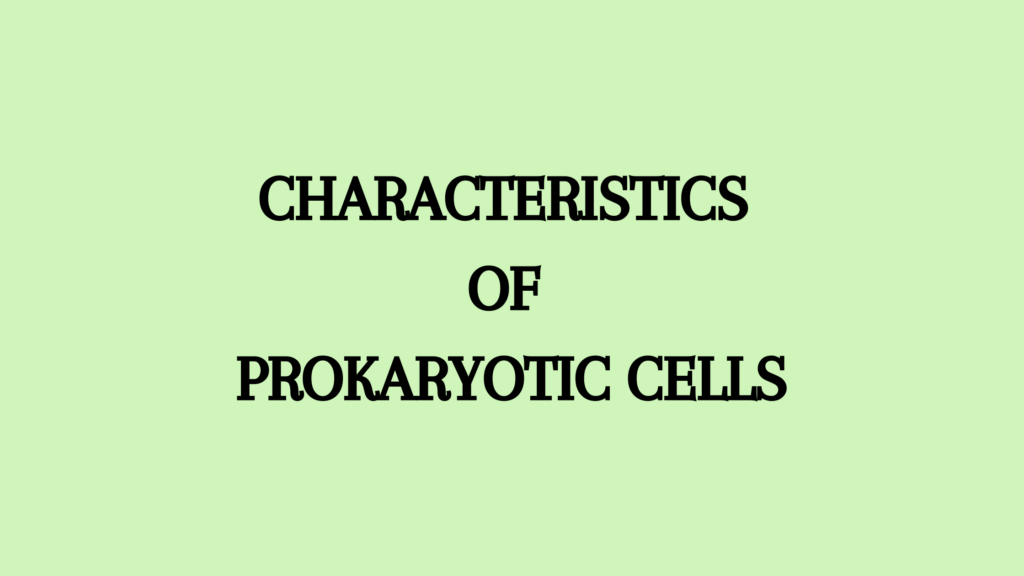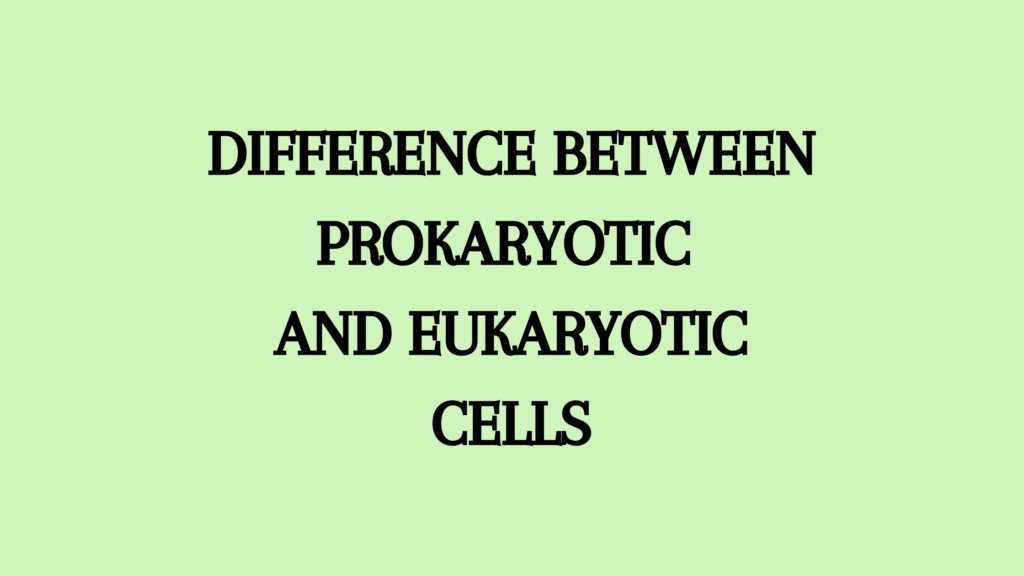The cell is defined as the unit of structure and function in plants and animals. It is also the smallest living independent unit existing with a small mass of living matter containing a nuclear material.
In 1963 Loewy and Siekevitz defined the cell as “A unit of biological activity redefined by a selectively permeable membrane and capable of self-reproduction in a medium free of other living organisms”.
Characteristics of Cells
All living creatures are made up of small cells. Organisms with one cell are called unicellular and those with many cells are called multicellular organisms.
- Cells are microscopic with a size between 0.1µ to 1,705. 000µ.
- The smallest cells are of the bacteria Mycoplasma gallisepticum .
- The ostrich egg is the largest cell with a size of 175mm in diameter.
- Longest cells are the muscle and nerve cells.
- Cells are seen in different shapes from spherical, cylindrical, tubular, cuboidal, triangular, rounded, oval, elongated, discoid, flat, irregular, etc.
- The shape of the cells depends on the organism and the specific organ.
Types of Cells
Fundamentally, there are two main types of cells, depending on the presence or absence of a nucleus. These are called prokaryotic and eukaryotic cells.
This is based on the presence or absence of a nucleus. The former does not have a nucleus and the latter has a well-defined nucleus. They also differ in the type of organelles inside them. Prokaryotic cells are characteristic of bacteria while eukaryotic cells are common in protists, animals, plants, humans, etc. There are three special features for the division of cells, such as,
- Organization of biomembranes
- Variety of cytoplasmic organelles
- Complexity of nuclear material
Fundamental Properties of Cells
Life is the primary property of cells which will not deteriorate if isolated. Unlike an organism, cells die only by their own hand. Cells are also capable of regeneration in a culture outside of the body of an organism. Apart from these features, cells exhibit other characteristics as well.
Highly Complex and Organized
Cells are complex with a more precise organization with fewer errors. The activities inside the cells and their interactions with the outside environment are all precise. The process of DNA duplication occurs with an error-free precision of just one mistake per 10 million nucleotides that are incorporated.
The appearance of each organelle, their functioning, and organization are also predetermined and cells are capable of sticking to these rules. Moreover, cells of plants, animals, and humans have different anatomical features and each cell that makes up these structures is unique to their genome and will not change easily.
Possess a Specific Genetic Program
Cells pack the genetic program in a set of chromosomes, which are located within the nucleus of the cells. These genes function as a storage of genetic information, blueprints for cellular structures, control of cellular activities etc. Genes also undergo specific processes called mutations that help develop variations in the genetic information.
Cells Can Produce More Cells
Cells are capable of self-reproduction to help in the growth and development of organisms. When the cells divide, the contents from the mother cells get divided equally into its daughter cells. During this process, the genetic information will also divide, replicate, and pass on to each daughter cell.
Cells Can Receive and Use Energy
Specific cells can absorb electromagnetic radiation from the sun and convert this light energy into chemical energy through photosynthesis. Light-absorbing pigments inside the cells absorb the light energy.
Animal cells are programmed to use pre-packaged energy in the form of glucose molecules to generate energy for their needs. This released energy from the glucose molecules is later stored in smaller packets called ATP molecules. This way, cells are capable of building as well as breaking down necessary molecules to generate and utilize energy as needed. These processes help with the integrity of the cell and its components.
Can Perform Different Chemical Reactions
Regardless of the size of a cell, every cell contains certain enzymes that help carry out various chemical reactions. These chemical reactions include catabolism and anabolism, which are together known as metabolic activities.
Perform Mechanical Activities
Cells are a site of various types of activities. These activities include mechanical tasks such as mechanical changes within the cells, movement of the cells or its contents, assembling of structures or disassembling, etc. These activities are under the control of mechanical or motor proteins present inside it.
Response to Stimuli
Each cell responds to different stimuli in a different manner. The stimuli could be the source of nutrients, hormones, extracellular materials, etc. As a response, cells contain various receptors in the specific target cells. The response to stimuli is in the form of metabolic activities, mechanical changes, or even suicide of the cell.
Self-regulation of Cells
As a complex structure that requires energy for regular activities, cells can perform self-regulation constantly. Cell regulation is important as an error or failure to perform an activity could be fatal not only for the cells but also to the organism itself. For this control, each type of cell possesses a specific set of tools that function automatically in response to a stimulus or independently.




